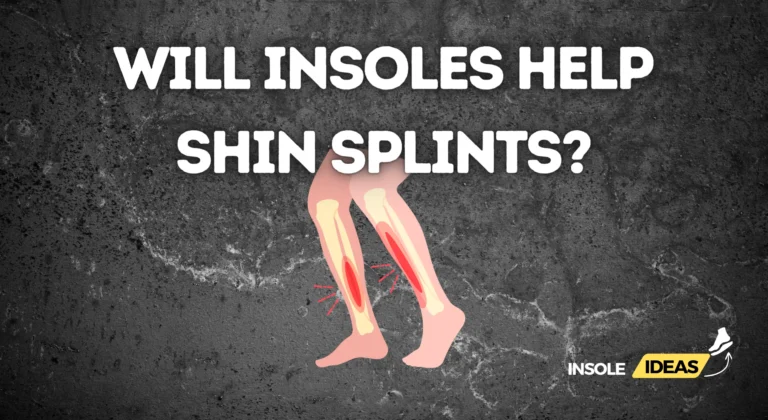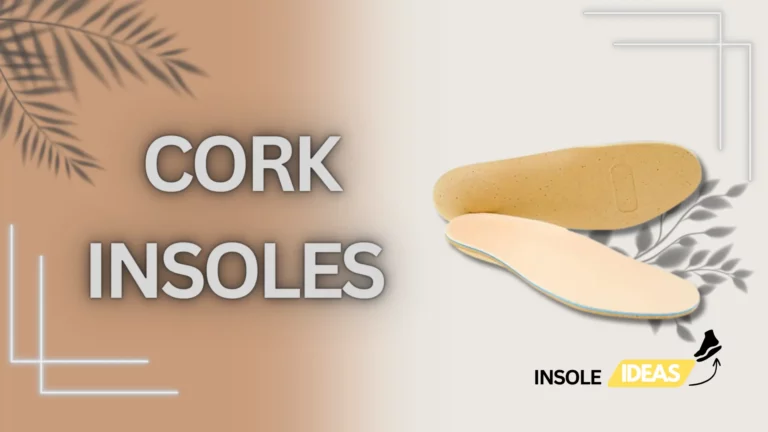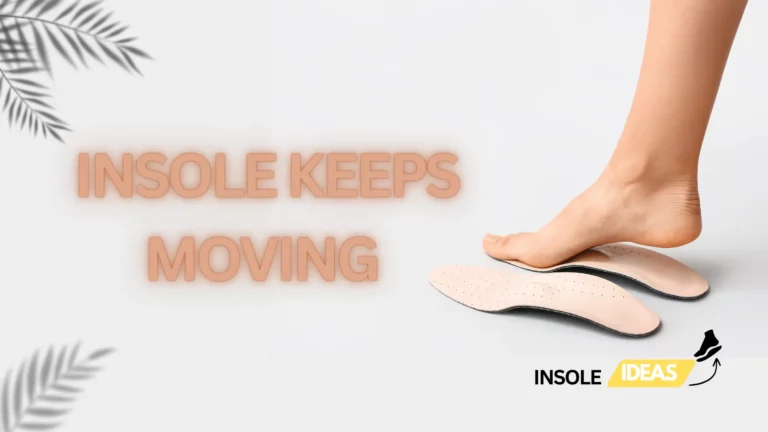When to Use Insoles: A Guide to Optimal Foot Comfort
An important part of shoes that may greatly improve both the comfort and general health of the feet are insoles. The goal of this tutorial is to provide readers a thorough grasp of the situations and benefits of utilizing insoles. Proper foot care is crucial for maintaining an active and healthy lifestyle, making the use of insoles an important aspect of personal wellness.
Brief Overview of Insoles
Orthopedic devices called insoles—also referred to as footbeds or shoe inserts—are made to give the feet extra support and comfort. They can be placed inside shoes to address various foot-related issues and enhance overall foot health. Insoles come in different materials and designs, catering to specific needs such as arch support, cushioning, and alignment correction.
Importance of Foot Health
Understanding the significance of foot health is paramount in recognizing the role of insoles. Feet bear the weight of the entire body and are subjected to constant stress and pressure. Ignoring foot health can result in a host of issues that impact not just the feet but also posture and mobility in general. Insoles act as a preventive and corrective measure, promoting optimal foot health and preventing discomfort.
Understanding Foot Problems
Foot problems are diverse, ranging from common issues to more specific conditions that may require professional attention. Recognizing these problems is crucial for determining the appropriate use of insoles and addressing discomfort effectively.
Plantar Fasciitis
An inflammation of the thick band of tissue that crosses the bottom of the foot, known as the plantar fascia, is the hallmark of a common foot problem called plantar fasciitis. Heel discomfort is a common symptom of this illness, particularly in the morning or after extended periods of inactivity. Insoles designed to provide arch Cushioning and support can alleviate the symptoms of Plantar Fasciitis, offering relief and promoting healing.
Flat Feet
Fallen arches, also known as flat feet, happen when the foot’s arches give way and the whole sole touches the ground. Foot discomfort and weariness may result from this disorder. For people with flat feet, insoles with the right arch support assist transfer weight evenly, giving stability and lessening strain on the feet.
Overpronation
Overpronation is a biomechanical issue where the foot rolls excessively inward while walking or running. This can lead to various problems, including ankle pain and instability. Insoles designed to control pronation offer corrective support, aligning the foot properly and preventing overpronation-related issues.
Impact on Daily Life
The impact of foot problems on daily life cannot be overstated. Discomfort and pain can hinder mobility, affect posture, and even lead to secondary issues such as knee or back pain. By addressing these concerns with the appropriate insoles, individuals can enjoy improved comfort, enhanced performance, and an overall better quality of life. Insoles play a vital role in mitigating the impact of foot problems, allowing individuals to move with confidence and ease.
Signs Indicating the Need for Insoles
Persistent foot pain is often an indication that the use of insoles may be beneficial. Identifying the specific areas of discomfort can help determine the type of insole needed for effective relief.
Arch Pain
Arch pain, characterized by discomfort in the arch of the foot, can result from various factors such as flat feet or overpronation. Insoles with targeted arch support can alleviate this pain by providing the necessary reinforcement to the foot’s arch, distributing pressure evenly and promoting a more natural gait.
Heel Pain
Heel pain, a common issue associated with conditions like Plantar Fasciitis, can significantly impact daily activities. Insoles designed to cushion the heel area can absorb shock and reduce pressure, offering relief from heel pain and supporting the healing process.
Discomfort During Physical Activities
Engaging in physical activities can exacerbate foot discomfort, making it crucial to address this issue for an active lifestyle.
Running
Runners often experience foot fatigue and pain due to repetitive impact. Insoles specifically designed for running shoes provide additional cushioning and support, reducing the strain on the feet and enhancing comfort during running sessions.
Standing for Prolonged Periods
Individuals who stand for extended periods, such as those in professions requiring long hours on their feet, may experience discomfort. Cushioning insoles can help reduce the impact on the feet, preventing fatigue and discomfort associated with prolonged standing.
Types of Insoles
Choosing the right type of insole is essential for addressing specific foot issues and achieving optimal comfort.
Arch Support Insoles
The purpose of arch support insoles is to provide the foot’s natural arch additional support. They help to maintain proper alignment and lower the risk of conditions like arch pain and plantar fasciitis, making them especially helpful for people with high or low arches.
Cushioning Insoles
Cushioning insoles focus on providing extra padding and shock absorption. These are suitable for individuals seeking additional comfort during activities that involve impact, such as running or standing for extended periods.
Orthotic Insoles
Orthotic insoles are specialized inserts that cater to various foot issues, including overpronation or supination. They provide a blend of cushioning and arch support, encouraging healthy foot alignment and lowering the possibility of biomechanical issues.
Choosing the Right Insole
Selecting the appropriate insole involves considering individual foot characteristics and preferences.
Foot Arch Assessment
Conducting a foot arch assessment helps determine the type of arch support needed.
High Arch
Individuals with high arches benefit from insoles that provide ample arch support to prevent excessive pressure on the ball and heel of the foot.
Neutral Arch
For those with a neutral arch, insoles with balanced support can help maintain proper foot alignment and prevent discomfort.
Low Arch
For stability and proper weight distribution throughout the foot, insoles with improved arch support may be necessary for those with low arches.
Material Considerations
Different insole materials offer varying levels of support and comfort.
Gel Insoles
Gel insoles are a great option for those who want more cushioning when engaging in high-impact activities because they offer superior shock absorption.
Foam Insoles
Foam insoles are versatile and offer a balance of support and cushioning. They are suitable for various foot types and daily activities, providing comfort throughout the day.
Insoles for Different Footwear
Insoles are not one-size-fits-all, and choosing the right type for specific footwear is crucial for maximum comfort and effectiveness. Different types of shoes require tailored insoles to address the unique demands of each style.
Athletic Shoes
Athletic shoes, designed for various sports and physical activities, benefit from insoles that offer proper support, cushioning, and stability. Insoles for athletic shoes are often engineered to absorb impact, provide arch support, and enhance overall performance. Runners may opt for insoles with extra cushioning, while those engaged in high-impact sports may prioritize shock absorption.
Dress Shoes
Dress shoes, known for their sleek and often less accommodating designs, can pose a challenge when it comes to foot comfort. Insoles for dress shoes are typically thinner and more discreet, offering support without compromising the shoe’s aesthetic. Arch support and metatarsal cushioning are common features in dress shoe insoles, ensuring that individuals can maintain a polished appearance without sacrificing comfort.
Work Boots
Work boots, worn in demanding environments, require insoles that can withstand prolonged use and provide adequate support. Insoles for work boots often focus on shock absorption, arch support, and durability. These insoles are designed to withstand the rigors of heavy-duty work while ensuring the feet are well-supported and protected throughout the day.
Custom vs. Off-the-Shelf Insoles
The choice between custom and off-the-shelf insoles depends on individual preferences, foot conditions, and the level of customization required for optimal comfort.
Benefits of Custom Insoles
Custom insoles, crafted to fit the unique contours of an individual’s feet, offer a personalized solution to address specific foot issues. These insoles are often prescribed by podiatrists or foot specialists, taking into account factors such as arch type, foot shape, and gait analysis. The main advantage of custom insoles is their ability to provide targeted support, potentially alleviating chronic foot problems and enhancing overall comfort.
Convenience of Off-the-Shelf Insoles
Off-the-shelf insoles, readily available in stores, provide a convenient and cost-effective option for individuals seeking general foot support. These insoles come in various sizes and designs, catering to common foot issues such as arch support or cushioning. While they may not offer the same level of customization as custom insoles, off-the-shelf options are suitable for individuals with mild to moderate foot discomfort or those looking for preventive measures.
Proper Insertion and Fit
Ensuring the correct placement of insoles within your shoes is essential for experiencing their full benefits. Proper insertion and fit contribute to optimal support, comfort, and the prevention of potential foot issues.
Ensuring Correct Placement
The correct placement of insoles aligns with the natural contours of your feet and the design of your shoes. Insoles often come with guidelines on proper placement, which may involve aligning the arch support with your foot’s arch. To get the most out of the insoles, it’s imperative that you go by these recommendations. Incorrect placement can lead to discomfort and may not provide the intended support.
Trimming for a Perfect Fit
Insoles are often designed to be trimmed to fit your specific shoe size. Trimming allows for a customized fit, ensuring that the insoles neither overcrowd the shoe nor leave gaps. Carefully follow the provided instructions for trimming, and take the time to achieve an accurate fit. A precise fit enhances the insoles’ performance and prevents any discomfort or imbalance in the shoe.
Maintenance and Cleaning
Proper care and routine cleaning are crucial for maintaining the efficiency of your insoles and extending their lifespan. Taking these steps can ensure that your insoles continue to provide the support and comfort you need over time.
Prolonging Insole Lifespan
Regularly rotating between multiple pairs of insoles can help distribute the wear and extend their lifespan. This is particularly beneficial for individuals who use insoles daily. Additionally, storing insoles in a cool, dry place when not in use prevents the growth of bacteria and preserves the integrity of the materials.
Cleaning Tips
Cleaning insoles is a straightforward process that can be done regularly to prevent odor and bacterial buildup. Take off the insoles from your shoes and use a moist towel to clean them. For a deeper clean, consider using a mild soap solution. Before putting the insoles back in your shoes, let them air dry fully. Avoid exposing insoles to direct heat, as this can damage the materials.
Potential Risks and Precautions
Despite the many benefits that insoles provide, it’s essential to understand the possible hazards and adopt the appropriate safety measures to guarantee a happy experience with these foot accessories.
Allergies to Insole Materials
Some individuals may be allergic to certain materials used in insoles, such as latex or certain adhesives. Before purchasing insoles, check the materials list for any known allergens. If you have a history of allergies, consider hypoallergenic or allergy-tested insoles to minimize the risk of adverse reactions.
Monitoring Discomfort
Insoles should enhance comfort, not cause discomfort. If you experience persistent pain, irritation, or discomfort after using insoles, it’s crucial to assess the situation. Discontinue use if discomfort persists and consult with a healthcare professional or a podiatrist to address any potential issues or to explore alternative insole options.
Top of Form
Insoles for Specific Activities
Choosing the right insoles for specific activities is crucial for providing the necessary support and comfort tailored to the demands of each activity.
Running Insoles
Running insoles are designed to absorb shock and provide extra cushioning, reducing the impact on the feet and joints during each stride. These insoles often feature enhanced arch support to maintain proper foot alignment, preventing issues such as overpronation or arch pain. Runners can benefit from the added stability and reduced fatigue that running insoles offer, contributing to a more enjoyable and injury-free running experience.
Insoles for Standing Jobs
People who work occupations that need them to stand for extended periods of time may become tired and uncomfortable. Insoles designed for standing jobs prioritize shock absorption and cushioning to alleviate pressure on the feet. They often provide additional arch support to relieve tension on the lower limbs, improving improved posture and minimizing the risk of problems like plantar fasciitis.
Insoles for Sports
Sports insoles are crafted to address the specific needs of various athletic activities. Whether it’s basketball, soccer, or tennis, these insoles offer targeted support, stability, and shock absorption. Sports insoles are designed to withstand the rigorous movements and impact associated with different sports, enhancing performance and reducing the risk of injuries.
Pediatric Considerations
Children’s feet develop significantly, thus while choosing insoles, it’s important to take into account their particular demands.
Children’s Foot Development
Children’s feet are still developing, and their footwear requirements differ from those of adults. It’s essential to choose insoles that support natural foot development, providing a balance of cushioning and flexibility. Insoles for children should not interfere with the natural arch formation and should allow for proper movement as their feet grow.
Choosing Insoles for Kids
When selecting insoles for kids, opt for breathable materials that minimize moisture and provide adequate arch support. Insoles for children’s shoes should be easily adjustable to accommodate growth spurts. Prioritize comfort and flexibility to support the natural movement of their feet, ensuring that the insoles contribute positively to their overall foot health.
Insoles for Medical Conditions
Insoles can play a crucial role in managing and alleviating symptoms associated with certain medical conditions.
Diabetes and Foot Care
People who with diabetes should take extra care of their feet. Diabetes can lead to reduced sensation and circulation in the feet, making them prone to injuries. Insoles for diabetes are designed to provide gentle support, reduce pressure points, and minimize the risk of friction-related injuries. Regular monitoring and consulting with healthcare professionals are essential for those with diabetes to ensure proper foot health.
Arthritis and Insole Support
Arthritis can cause joint pain and stiffness, affecting the feet. Insoles for arthritis are designed to provide cushioning, support, and reduce the impact on the joints. They may also feature materials with shock-absorbing properties to alleviate discomfort. Customized insoles can be particularly beneficial for individuals with arthritis, offering tailored support to address specific foot concerns associated with the condition.
Professional Advice
Getting expert guidance from foot health specialists can offer important insights into the choice and application of insoles.
Podiatrists’ Recommendations
Podiatrists, specialized in foot and ankle care, can offer personalized recommendations for insoles based on an individual’s foot structure, gait, and specific concerns. They may conduct assessments to identify any biomechanical issues and prescribe custom insoles tailored to address unique foot conditions. Podiatrists’ expertise ensures that the selected insoles align with the individual’s overall foot health, providing targeted support and promoting long-term comfort.
Physical Therapists’ Insights
Physical therapists possess a deep understanding of biomechanics and musculoskeletal conditions, making their insights valuable when considering insoles. They can assess movement patterns, identify areas of muscle imbalance, and recommend insoles that complement therapeutic interventions. Physical therapists may suggest insoles as part of a comprehensive treatment plan to address issues such as plantar fasciitis, overpronation, or general foot discomfort. Their guidance contributes to the overall effectiveness of insoles in promoting recovery and preventing future problems.
Conclusion
Insoles play a significant role in promoting foot health and alleviating discomfort associated with various conditions. Proper selection, fit, and maintenance are key factors in maximizing their benefits. Important lessons from this book include the significance of comprehending foot issues, selecting the appropriate kind of insoles, and keeping particular activities or medical concerns in mind while making a decision. Insoles not only offer comfort but can also prevent and manage foot-related issues, contributing to an improved quality of life.
Q: Can I wear insoles every day?
A: Absolutely! Daily use provides continuous support for your feet, reducing fatigue and discomfort.
Q: Do insoles work for all types of shoes?
A: Yes, insoles come in various shapes and sizes, making them compatible with almost all types of footwear.
Q: Can insoles help with foot pain from standing all day?
A: Definitely! Insoles designed for prolonged standing can alleviate pain and provide much-needed relief.
Q: Are custom-made insoles worth the investment?
A: For individuals with specific foot conditions, custom-made insoles offer personalized support and long-term benefits.
Q: How often should I replace my insoles?
A: It’s recommended to replace insoles every six months or sooner if you notice signs of wear and diminished support.



